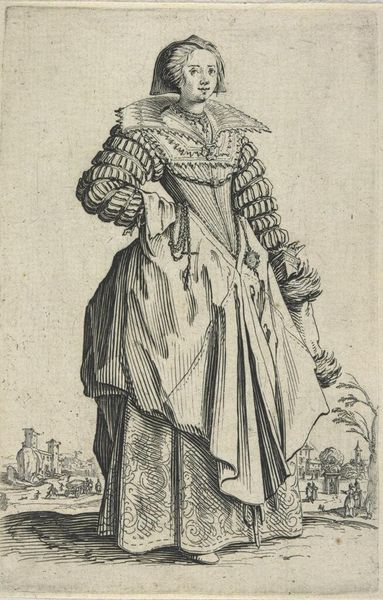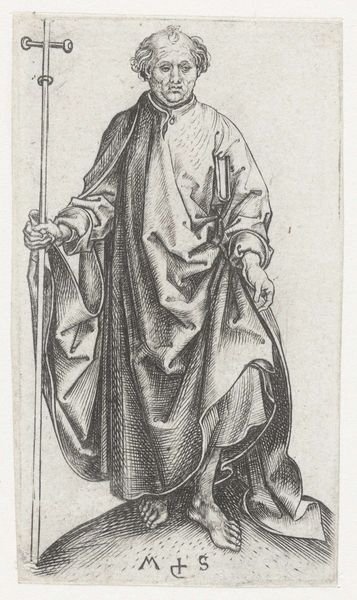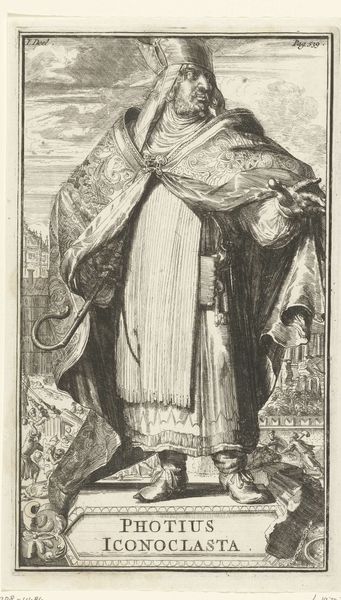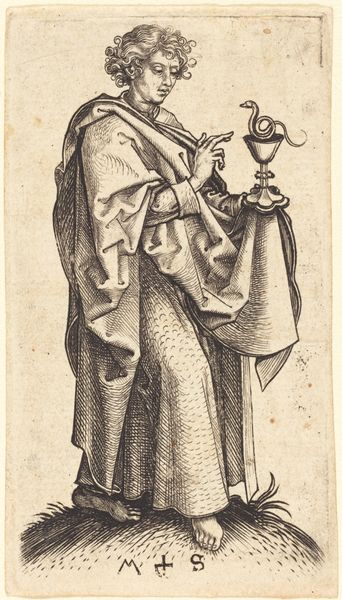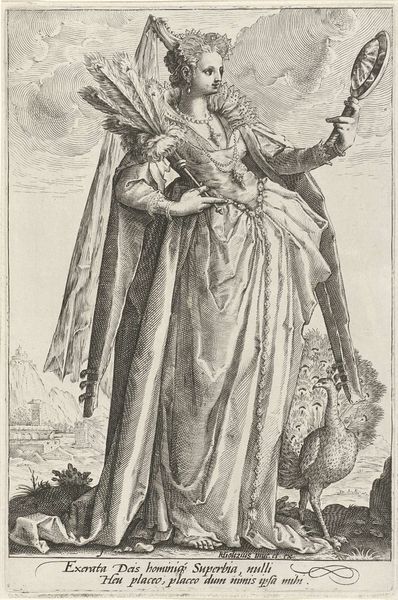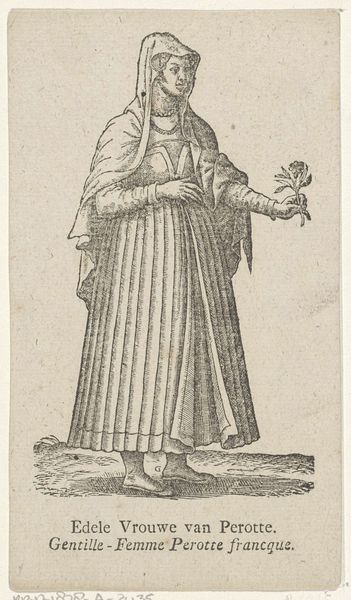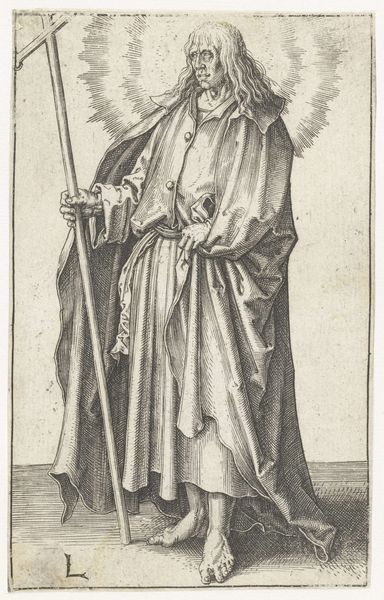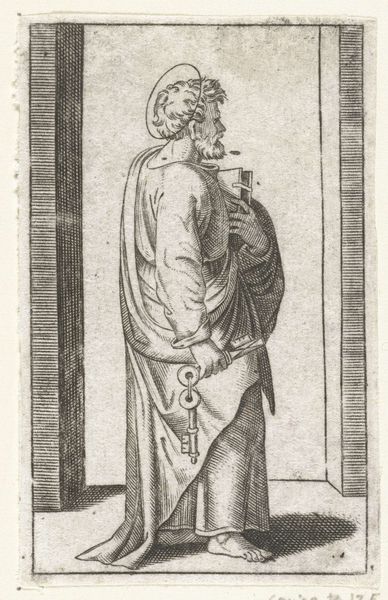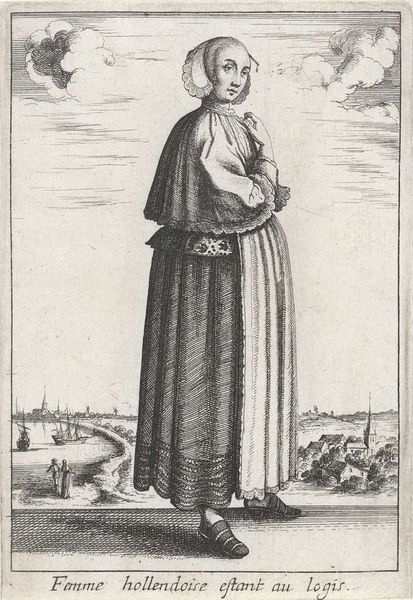
print, engraving
#
portrait
#
pencil drawn
#
baroque
# print
#
portrait drawing
#
history-painting
#
engraving
Dimensions: height 204 mm, width 127 mm
Copyright: Rijks Museum: Open Domain
Curator: This is Wenceslaus Hollar’s "H. Barbara," an engraving dating to 1647, currently held in the Rijksmuseum. Editor: Immediately, I see a figure almost floating. The linear quality of the engraving, combined with the subject's soft gaze, evokes a sense of dreaminess, almost melancholic. What's she holding? Curator: It appears to be a chalice topped with a small disc. Given the title, it seems highly probable that we are seeing Saint Barbara, a popular figure in the medieval and early modern periods. The chalice is one of her most recognizable attributes, a symbol of her role as patron saint of those facing sudden or accidental death, particularly by fire. Editor: Fire, both literal and metaphorical, seems to run through her story, doesn’t it? Her father locked her in a tower to protect her from suitors and outside influence. This echoes the restrictive roles imposed upon women, and their efforts to find autonomy or self-expression. Was Hollar commenting on this repression through the melancholic presentation of the subject? Curator: He was a skilled documentarian, and he lived through very troubled times. But, yes, certainly there could be social and political context woven into the visual presentation and use of such iconic visual symbols. Consider the landscape behind her. The tower could be an iconographical hint referring to her imprisonment but might also act as a landscape feature to suggest that Saint Barbara, a Christian saint, represents strength that is timeless and able to weather great changes throughout history. Editor: It’s striking how this engraving, created centuries ago, continues to resonate. We can examine it not just as an object of art history, but also as a cultural artifact reflecting enduring themes of resistance, faith, and the search for justice, and, more importantly, how this saint has been viewed as an intercessor figure during epidemics. Curator: Indeed, and the way Hollar’s skillful technique creates a timeless quality, an icon that connects past struggles to present realities, it is the work's continuing power, its visual mnemonic that preserves the continuity of faith and values.
Comments
No comments
Be the first to comment and join the conversation on the ultimate creative platform.
